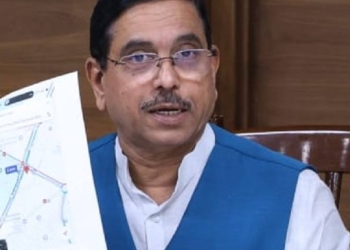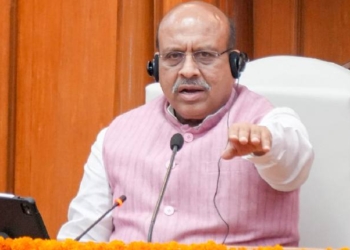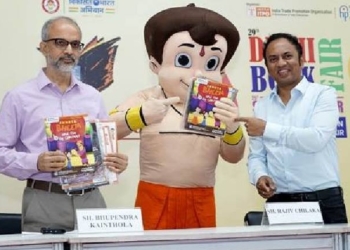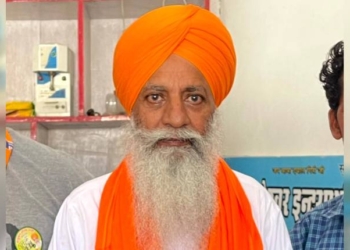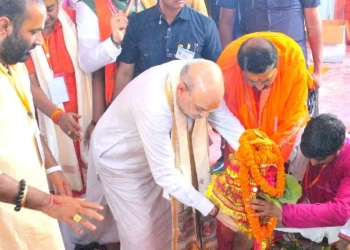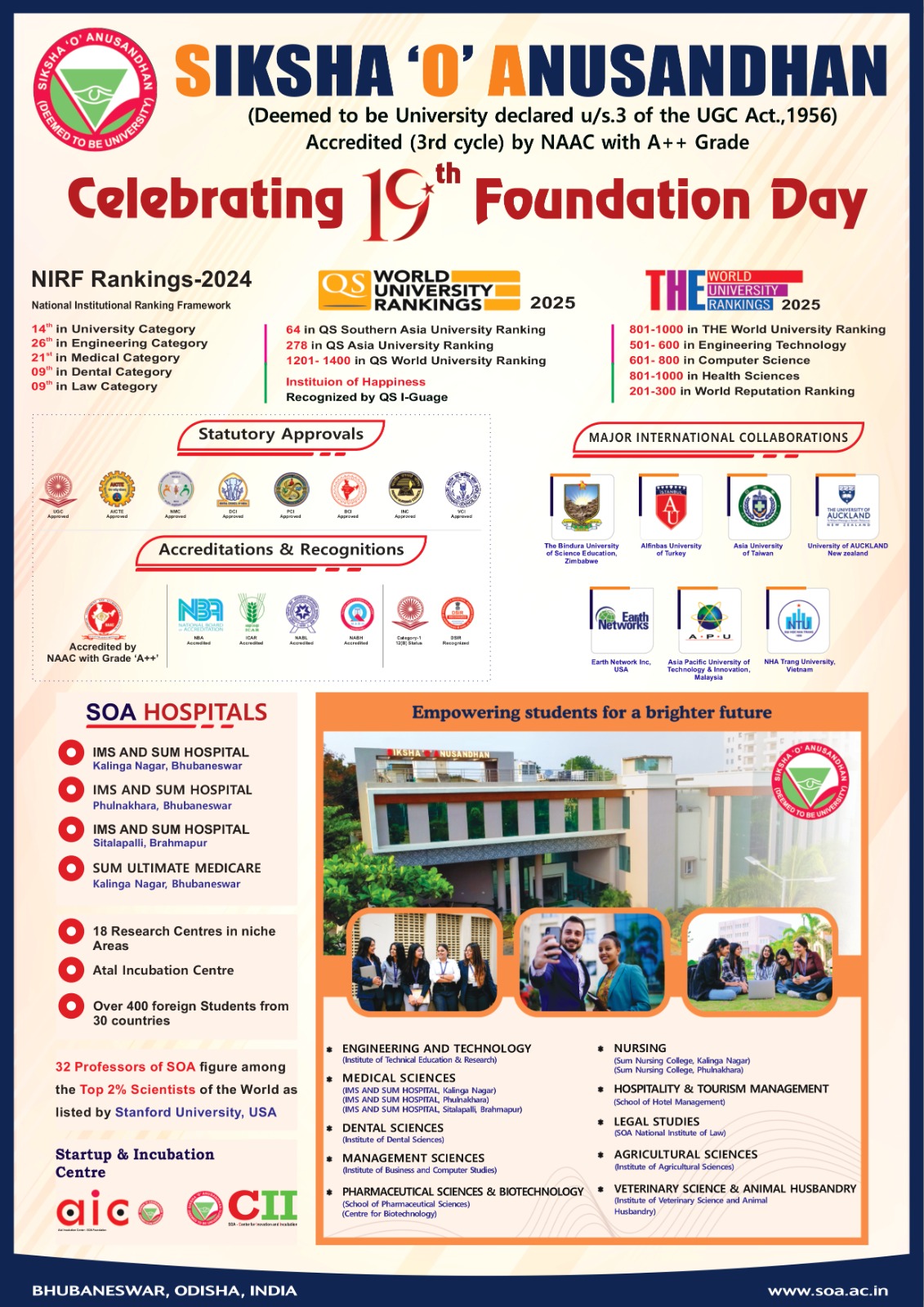Mumbai: The state’s most prominent political party, Shiv Sena — founded by the late ‘tiger’ Balasaheb Thackeray on June 19, 1966 — faced its biggest challenge in June 2022, when the 56-year-old party abruptly split and led to a political earthquake.
Eight months later, the party, founded and nurtured by Thackeray, and then the legacy carried forward by his son and ex-Chief Minister Uddhav Thackeray for the past 10 years, faces an existential crisis.
On Friday, the Election Commission of India (ECI) delivered its verdict and awarded the name-symbol to the breakaway faction headed by the current Chief Minister Eknath Shinde, even as the shell-shocked Thackeray and his team cried foul.
The party was known for Balasaheb Thackeray’s fiery speeches at the annual Dussehra rallies at Shivaji Park, or his no-holds barred oration during elections that made all political opponents cringe, plus the catchy name ‘Shiv Sena’, its ‘tiger logo’, and for the past 34 years, its iconic ‘Bow-and Arrow’ symbol, which was compared with the weapons wielded by Lord Rama during his exile.
At one shot, the Thackeray group’s claim on the party founded by Uddhav Thackeray’s father has gone to Shinde who joined the outfit much later when it was already flourishing and reputedly a political force to reckon with in the early 1980s with its strong ‘sons of the soil’ and ‘Marathi Manoos’ political pitch that stirred the masses.
Thackeray carved a clear political niche from his maiden Dussehra rally in Shivaji Park on October 30, 1966, roaring that the party would live and work for the welfare of the ordinary Marathis, for rights to education, jobs, housing, etc across spheres.
From 1967, it contested various elections — the Assembly and civic bodies like Thane Municipal Corporation and BrihanMumbai Municipal Corporation (BMC) on different symbols, but it was only in October 1989 that the ECI presented the ‘Bow-and-Arrow’ to the Thackeray-led saffron party.
Already a force to reckon with, the Shiv Sena was dreaded and revered in equal measure in the state and Centre — it could paralyse Mumbai and even large parts of Maharashtra with one word ‘Bandh’ uttered softly by Balasaheb Thackeray.
In 1989, with the blessings of the late stalwart Atal Behari Vajpayee and L. K. Advani (who later became the Prime Minister and Deputy PM) or persons like Pramod Mahajan, Gopinath Munde (brothers-in-law, both deceased), and others, the BJP entered into a ‘strategic political alliance’ with the Shiv Sena.
Armed with the powerful symbol, the Sena managed to capture the country’s richest civic body, BrihanMumbai Municipal Corporation and lorded over it for nearly three decades till now – and the next polls are a question mark in the present scenario.
The Shiv Sena played an important role during the Ayodhya movement of December 1992 when the Babri Mosque was felled, followed by communal riots that engulfed Mumbai in December 1992-January 1993, then the serial bomb blasts of March 12, 1993 that rocked the country’s commercial capital, and many such developments that concretised the party’s staunch ‘Hindutva’ image.
All this worked like magic with the Marathi masses and the Shiv Sena-BJP grabbed power for the first time in 1995 with the Sena’s Chief Minister Manohar Joshi (and later Narayan Rane) and Deputy CM Gopinath Munde of the BJP – uprooting the Congress from its strongest bastion.
However, in 1999, the alliance was voted out and the Congress-Nationalist Congress Party ruled the state for 15 years, as the aging ‘tiger’ Balasaheb Thackeray kept expressing his wish of planting the Sena’s saffron flag atop Mantralaya again.
After Balasaheb Thackeray’s passing on November 17, 2012, his son and the new ‘Sena-pati’ Uddhav Thackeray carried forward his ideals, and at the height of the BJP wave in 2014, the saffron alliance returned to power.
However, unlike 1995, the roles were reversed in 2014 – the BJP’s Chief Minister Devendra Fadnavis was at the helm, but the party didn’t part with the post of Deputy CM for its partner Shiv Sena, and again it was election time in October 2019.
In October 2019, owing to certain ‘unkept promises’ the Shiv Sena dumped the BJP and entered into an unimaginable coalition with the Congress-Nationalist Congress Party, and after many hiccups, Uddhav Thackeray was anointed the Maha Vikas Aghadi’s CM.
Shocked at being relegated back to the Opposition benches, the BJP kept up a shrill anti-MVA government posture from Day 1, used all tricks, ‘saam, daam, dand, bhed’ to dislodge Thackeray, even as the country grappled with the coronavirus pandemic from March 2020.
On his part, Thackeray earned immense goodwill for his handling of the Covid-19 crisis, with his regular fatherly speeches working like a balm to soothe the edgy masses, and his popularity rose, unnerving the Opposition.
Finally, the ‘bhed’ came into play in June 2022, when Shinde and around 40 MLAs, plus some 10 independents supporting the MVA, suddenly ‘disappeared’ from Maharashtra to Gujarat to Assam to Goa before returning to topple the Thackeray government and Shinde became the CM.
Not willing to face public ire, the BJP chose to play second fiddle with Fadnavis becoming the Deputy CM, the Shiv Sena was in disarray, its name-symbol frozen by the ECI in October 2022. Both the Shinde and Thackeray factions got different temporary new names-symbols on which they functioned for the past nearly five months, till February 17, 2023.
As the entire Thackeray side screamed ‘Chor, Chor’ at Shinde, the party is now planning to challenge the ECI move in the Supreme Court and mentally preparing for a legal long haul.
There are other demons lurking in the form of the party possibly losing its temporary name ‘Shiv Sena (UBT)’ and the ‘Flaming Torch’ symbol which were just getting familiar, the forthcoming Budget Session of the Legislature, upcoming series of civic elections, including BMC, where it will face a tough time and an identity crisis.
In a consolation of sorts, Thackeray is not alone in the war and the Congress-NCP have assured that they will fully back him till the logical end.
(IANS)




